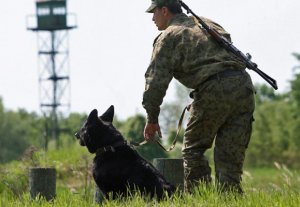
Central Asia’s Border Problems Materialize Again
Publication: Eurasia Daily Monitor Volume: 12 Issue: 151
By:

In recent weeks, tensions have been high and rising along Kyrgyzstan’s borders with Uzbekistan as well as Tajikistan—neither of which have been fully demarcated by the countries involved since independence. These border skirmishes have routinely escalated to the point of people throwing rocks, blocking highways, cutting off water supplies, and building walls on territory others claim is not theirs. In some cases, family members living in these border areas have been blocked from attending funerals (Knews.kg, August 6; News.tj, August 8). And such problems have been complicated by the fact that there are numerous small ethnic enclaves inside the neighboring states, which can always be subject to pressure by cutting off roads, water or power (see EDM, May 28, 2013).
If there were a modicum of good will on both sides, most but not all of these problems might easily be sorted out. (There are exceptions, of course, given the extremely dense populations along parts of these borders and the intermixing of the ethnic groups.) But in the near absence of good will, negotiations have dragged on, sometimes as a result of disputes over which maps to use, but often because of petty behavior. Not long ago, for example, Tashkent canceled talks with Bishkek after the Kyrgyz Republic sent a delegation that Uzbekistan claimed did not correspond to the agreed-upon meeting format. When Kyrgyzstan said it would simply send home those members of its delegation who were not needed, Uzbekistan responded that this gesture was not good enough; the talks were postponed yet again, with each side seeking to gain advantages often measured in meters not kilometers (Members.vb.kg, August 7).
Given this example of Uzbekistan’s authorities drawing out and effectively scuttling the talks in order to give Tashkent more time to covertly push the border deeper into Kyrgyzstan, Naryn Ayyp of “Vecherny Bishkek” writes that Kyrgyzstan’s government must “find a way, by any means, of holding negotiations and pushing them forward. Otherwise,” he notes, “the border zone on the Kyrgyz side will continue to become smaller and smaller.” He does not specify what these other “means” might be, but some indication of what they could consist of was provided by talks between Kyrgyzstan and Tajikistan, whose border dispute has been growing worse in recent months. In particular, the Tajik side blocked several roads, and the Kyrgyz one responded by blocking water supplies, thus disrupting the lives of people on both sides of the border (Members.vb.kg, August 7).
A week ago (August 3), a conflict broke out in the village of Kok-Tash, located along the border with Tajikistan, in Kyrgyzstan’s Batken oblast. Citizens of Kyrgyzstan and Tajikistan threw stones at one another, resulting in five people being injured. The violence expanded to mutual attacks on each other’s homes and cars. This fight broke out because the citizens of Tajikistan had blocked the road to a cemetery the Kyrgyzstanis used. In response the Kyrgyzstanis shut down a cross-border canal that delivered water to the Tajikistani village of Chorku (Knews.kg, August 6).
The governments in Bishkek and Dushanbe were sufficiently worried by this incident and the possibility of escalation that they not only organized a new round of talks between the border commissions but sent representatives of those commissions to the villages affected in order to try to calm things down and explain what needed to be done in order to avoid an explosion (News.tj, August 8).
Abdurakhman Mamataliyev, Kyrgyzstan’s deputy prime minister, announced a few days later that “at the present time, the situation on the Kyrgyz-Tajik border has stabilized. After the meeting of the representatives of force structures and the local officials of the two countries, people dispersed. However, law enforcement organs, both from the Kyrgyz side and from the Tajik side continue to work overtime. In addition, work is being conducted to determine how much harm occurred as a result of the conflict and also an investigation launched to bring to justice those who are guilty” (News.tj, August 8).
The working groups from each country consisted of senior officials who attempted to explain to the population what needed to be done. They secured an agreement on the simultaneous opening of the road for residents who wanted to visit the cemetery and the opening of the water mains for the villages affected. They even managed to persuade one local resident to shift a wall he had built on property belonging to the other country by a little over a meter so that it would no longer spark anger—or at least violence.
Some Central Asian governments appear only too happy to focus on unresolved border skirmishes in order to publicize and foster the kinds of disputes that will intensify ethno-national rather than religious identities. But these border disputes routinely threaten to destabilize the situation in Central Asia and overload these regimes with yet another set of challenges. As a result—and despite certain incentives to let the problems fester—the region’s governments are under pressure to try to reach agreements before these disputes spiral out of control.




